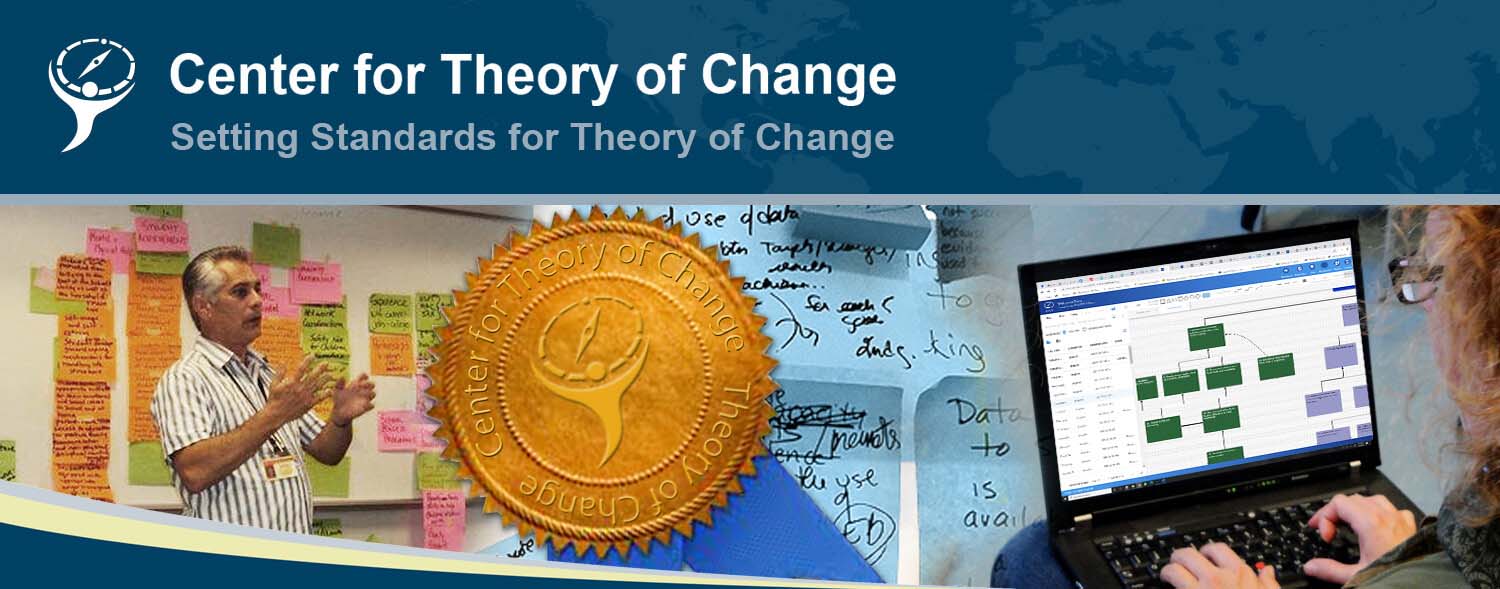| COMPONENTS OF AN INITIATIVE |
ROLE OF THEORY OF CHANGE THINKING AND STEPS |
| Identify Problem |
Before TOC begins. |
| Convene Key People to Address Problem |
Before TOC begins. |
| Conduct Research in Community to Better Understand the Problem |
Can occur before having a clear theory, and revisited when new questions emerge as a result of the TOC process. |
| Set Initial Goals |
Where TOC really begins, in establishing consensus around well-defined long-term goals. |
| Enlarge Stakeholder Group |
Based on knowledge of initial participants, but in creating the theory it often becomes clear that other people need to be at the table. |
| Team Building and Forging Collaboration |
As part of TOC, stakeholders are asked to be clear and explicit about their beliefs, goals, and assumptions. The process of discussion around these issues helps let everyone know where everyone stands and helps to build trust. |
| Begin Planning an Initiative |
The TOC process includes steps to elicit a conceptually tight, highly-detailed explanation for what changes need to occur and their relation to one another. |
| Raise Funds |
Use your change framework and narrative to demonstrate to funders that your initiative is well thought out, practical, and measurable and that you have a process in place to be accountable for results. |
| Develop an Action Plan |
The theory developed during the initial planning phase identified interventions and strategies needed, and also identified how much change you are expecting. These two things provide the basis for deciding which specific actions will bring about the expected degree of change. |
| Develop an Evaluation Plan |
Your theory of change is the blueprint for evaluation. It identifies indicators of success and specifies the details of who is expected to change and how much. This is the basis for developing the methodologies to measure the indicators. |
| Implementation |
Your theory of change is a dynamic, living set of ideas that should guide implementation and provide a framework for checking that the initiative stays on track. |
| Revise Plans (Mid-Course Corrections) |
Because your theory of change is a living, dynamic set of ideas, you can make changes to it as you learn from your experiences. A TOC helps guide decisions about how to make adjustments by clearly showing the relationship between outcomes. |
| Evaluation |
Your theory of change is the framework against which the success and obstacles of your initiative will be evaluated. Because you will have articulated all the assumptions, justification, and contextual conditions you believe affect your likelihood of success, lessons about how these change, expand, or prove correct will be evident. |
| Reporting to Funders, Boards, the Community, etc. |
Again, your theory of change provides the basis against which you can report your successes, setback and lessons, and your evaluation results. |
| Dissemination of Results to a Wider Audience |
While a good theory of change is critical for planning and evaluation, it is also a powerful communication tool because you can capture the complexity of your initiative in a form that is understandable to others. |
| Influencing Policymakers |
Being specific about what made your initiative successful, and how much change or success can be expected under given conditions and actions is what policymakers need to know in order to apply lessons from one initiative to other problems. |
